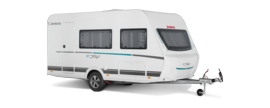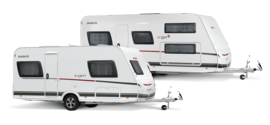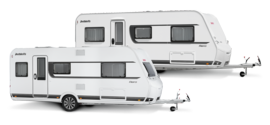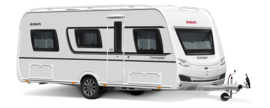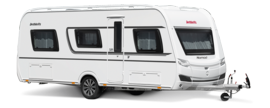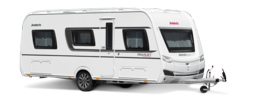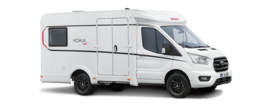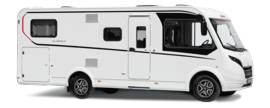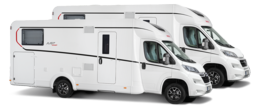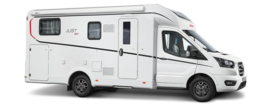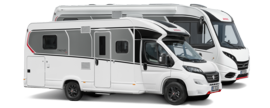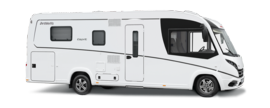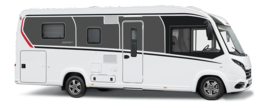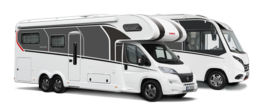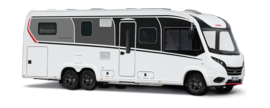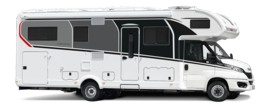Tips & tricks Caravans
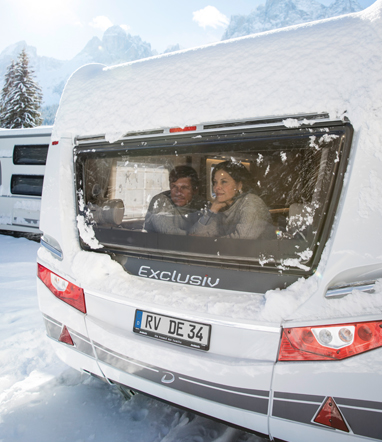
Stay safe on the road in winter
To ensure you don’t get caught out in icy and snowy conditions, there are several things you should keep in mind:
- Winter tyres are a “must” during the cold months of the year.
- Always go easy on the accelerator, steering wheel and brakes on slippery roads, because even assistive technologies such as electronic stability control have their limits.
- Always maintain sufficient distance to the vehicle ahead. Only by doing so will you have enough time to react in an emergency.
- Particular care should be taken on bridges, roads through dense forest, and shaded, north-facing surfaces – frost and black ice may be lurking there.
- Slow down whenever visibility is poor. A rule of thumb, if you can’t see beyond 50 metres, don’t drive faster than 50 km/h (30 mph).
- Your motto should always be “see and be seen”. Switch on your lights before you need to and keep headlights, indicators and sidelights free of snow and dirt.
- Put on snow chains in due time – before you start your trip, take time to practice putting them on and removing them while under no time pressure.
Make your caravan ready for winter
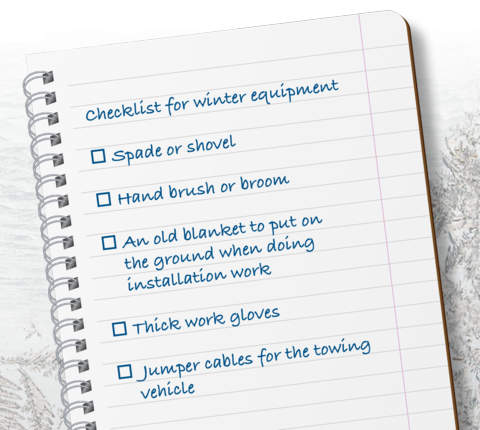
Glittering snow and enchanting winter landscapes are best enjoyed in a warm and cosy caravan. However, to make your winter fairytale come true you need to do some preparation. Here are the most important tips for getting your vehicle in top condition for the winter.
- Put special winter gear in your vehicle (see checklist on the right).
- Weight on the drive axle of the towing vehicle gives you extra traction and helps when manoeuvring on snow and ice.
- Remove snow from the caravan before setting off on your trip: snow and ice that suddenly breaks loose from your roof can endanger others.
- The best campsites are often fully booked – so get in touch and reserve your spot ahead of time.
- If you can avoid it, do not park your caravan under trees covered with snow. If snow and ice are dislodged, roof fans can be damaged.
- Place small boards or special plates underneath the crank supports so they do not sink into the ground and get frozen in place.
- Always keep forced ventilation for the vehicle and gas systems clear; remove snow under the vehicle if necessary.
- Keep the exhaust gas flue of the gas heating free of snow and ice.
- Route power cables in such a way that they cannot freeze to surfaces or be damaged when removing snow.
- Avoid introducing moisture into the interior; knock snow off clothing outside the vehicle. Briefly air out the interior by opening all doors and windows in the morning and after cooking.
- Release the handbrake so that the rods, cables and brake shoes do not freeze up (use wheel chocks to secure the caravan against rolling away).
And then sit back and watch the driving snow with a cosy cup of tea.
Have fun!
